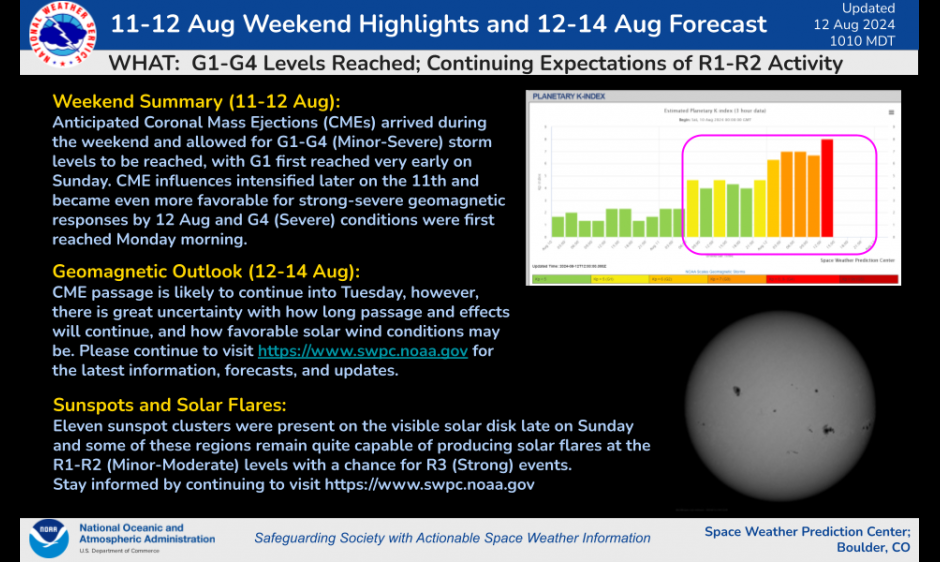
Between August 8-10, 2024, five Coronal Mass Ejections (CMEs) were observed leaving the Sun, prompting geomagnetic storm watches. The CMEs reached Earth over the weekend (August 11-12). CMEs, which are massive eruptions of solar material, can trigger geomagnetic storms upon arrival at Earth, potentially impacting various technologies. Geomagnetic storm conditions steadily intensified throughout the weekend into early Monday, culminating in a G4 (Severe) Geomagnetic Storm shortly before 1500 UTC. The SWPC has maintained continuous communication with power grid reliability coordination centers. This level of storming also causes HF communications degradation at high latitudes and increased satellite drag in low Earth orbit. Conditions are expected to persist into Tuesday, but the duration of CME impacts and the favorability of solar wind conditions remain highly uncertain. These conditions are part of the ongoing Solar Cycle 25, which has reached one of its highest levels of sunspot activity in over 20 years. Continue to visit the SWPC webpage for the latest information, forecasts, and updates.